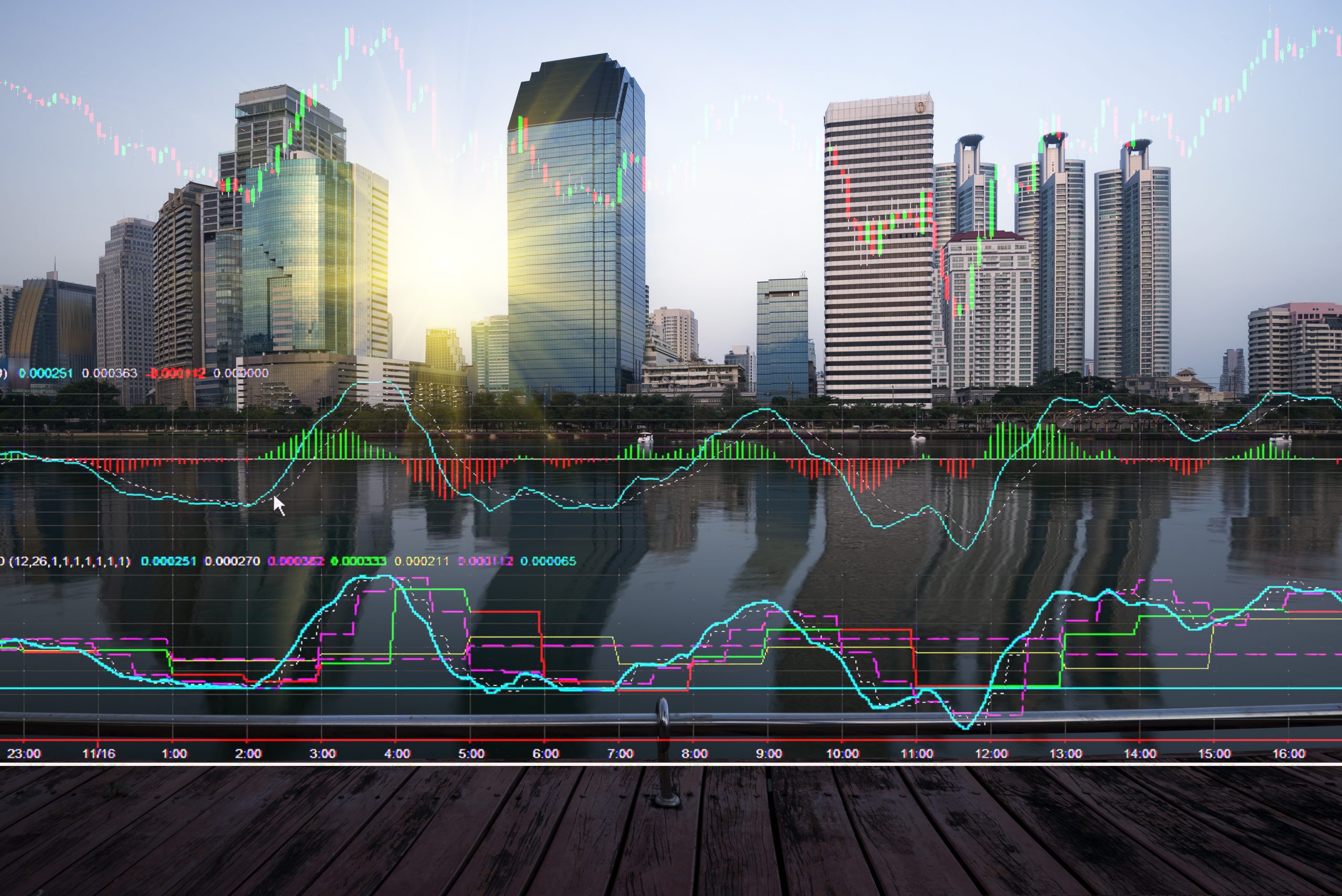Investing
Market Volatility and Your Retirement Strategy

In light of recent market volatility and stock market correction, you may have a sinking feeling in the pit of your stomach and visions of another Great Recession. Even though fluctuations in your 401(k) or employer retirement savings account can stir up negative emotions, we want to remind you not to hit the panic button and to stay on course with your long-term retirement savings strategy. The situation we find ourselves in today is different from what we experienced in 2008 and 2009. Given strong U.S. fundamentals, even if the markets head further south, we should be better positioned to ride out the turmoil than we were seven years ago. Sometimes staying the course is easier said than done; however, so we’d like to share some tips that will help you keep your retirement portfolio better positioned to benefit from a future market upswing.
Resist the urge to sell
Even though your 401(k) may have lost some value over the past few weeks, it pays to stick to your plan and stay the course for the long run. This way, you’ll avoid making emotionally driven decisions that could leave you missing out on potential gains when the market stabilizes.
The S&P 500 Index has risen more than 540 percent (not adjusted for inflation) from January 1995 to the end of 2014.1 That includes multiple recessions, the turn-of-the-century dot-com bust, the financial crisis, and the resulting Great Recession. Said another way, during the same time period, the S&P 500 averaged 9.85-percent returns each year, while the average equity mutual fund investor was up just a little more than 5 percent. The performance gap can be attributed to impulsive or emotional decisions on the part of investors to get out of volatile markets and then missing out on the upside when markets surge. Don’t forget that if you’re not invested in the market you aren’t receiving dividend payments, which can make up more than a third of their overall return we receive by investing in the marketing over the long term.
Source: “Quantitative Analysis of Investor Behavior, 2015” DALBAR, Inc.2
Don’t try to time the market
When you stray from your own well-thought-out plan in order to chase higher returns, there is a chance that your 401(k) account performance will get worse, not better. We know that past performance does not guarantee future results and that, historically, when it comes to the various asset classes, there is no discernible pattern of winners and losers. Because there is no way to predict next month’s or next year’s winners, you have a better chance of doing well by holding an appropriately constructed mix of investments and maintaining a long-term focus.
Keep contributing to your 401(k) and seek help when you need it
Although you may feel less flush with cash when looking at your account balances right now, this is not the time to stop contributing to your 401(k) or other retirement savings vehicles. Doing so could be leaving valuable employer-matching contributions on the table. Further, if you reduce your contribution rate, you may find yourself missing out on “buying low” at reduced share prices, which is the primary driver behind dollar-cost averaging.
The good news is that volatile markets do not last forever, and market corrections are both normal and inevitable—especially when stocks have been so strong for so long. Since 1946, the S&P 500 has dropped 5 percent to 10 percent about 60 times (or about once per year, on average).
Still, you may feel uncertain about how recent market fluctuations will affect your long-term retirement goals. If so, contact your financial advisor, who can review your account and help ensure that your assets are well diversified. If you do not have a personal financial advisor, you can contact our retirement consulting team for assistance with your employer’s retirement plan to help you feel confident in your long-term investment strategy.
Please contact your 401(k) provider or plan administrator to make sure you are invested in a manner appropriate to your time horizon and personal appetite for risk.
Forward-looking statements are not guarantees of future performance and involve certain risks and uncertainties, which are difficult to predict. All indices are unmanaged, and investors cannot invest directly in an index. Unlike investments, indices do not incur management fees, charges, or expenses. Past performance is no guarantee of future results.
###
Alex Assaley and Daniel Haverkos are financial advisors located at AFS 401(k) Retirement Services, 7700 Old Georgetown Road, Suite 630, Bethesda, MD 20814. They offer securities and advisory services as an Investment Adviser Representative of Commonwealth Financial Network®, Member FINRA/SIPC, a Registered Investment Adviser.
Authored by the Retirement Consulting Services team at Commonwealth Financial Network.
© 2015 Commonwealth Financial Network®
[1] Bloomberg Finance
2 DALBAR is an independent, Boston-based financial research firm which is not affiliated with Commonwealth Financial Network. The “average investor” refers to the universe of all mutual fund investors whose actions and financial results are restated to represent a single investor. Doing so allows the entire universe of mutual fund investors to be used as the statistical sample. For “average investor behavior,” QAIB quantitatively measures sales, redemptions, and exchanges provided by the Investment Company Institute (ICI) and describes these measures as investor behaviors. The measurement of investor behavior is the net dollar volume of these activities that occur in a single month during the period being analyzed. The S&P 500 Index is a market-weighted, unmanaged index of the 500 largest U.S. stocks in a variety of industry sectors. The calculations assume a $10,000 initial investment over the specific time period from 1995 through 2014. Using monthly fund data supplied by the ICI, QAIB calculates investor returns as the change in assets after excluding sales, redemptions, and exchanges. This method of calculation captures realized and unrealized capital gains, dividends, interest, trading costs, sales charges, fees, expenses, and any other costs. After calculating investor returns in dollar terms, two percentages are calculated for the period examined: total investor return rate and annualized investor return rate. Total return rate is determined by calculating the investor return dollars as a percentage of the net of sales, redemptions, and exchanges for the period. Past performance is no guarantee of future results. Returns do not include sales charges or the effect of any taxes. If such charges had been included, performance would be lower. Indexes and averages are shown for illustrative purposes and do not represent the performance of any actual investment portfolio. Investments cannot be made directly in an index.
Read the full article here

-

 Side Hustles5 days ago
Side Hustles5 days agoKickstart Your Year With These Entrepreneurial Health Checkups
-

 Side Hustles4 days ago
Side Hustles4 days agoExpand Your Global Reach with Access to More Than 150 Languages for Life
-

 Side Hustles3 days ago
Side Hustles3 days agoKFC Announces Saucy, a Chicken Tenders-Focused Spinoff
-

 Investing3 days ago
Investing3 days agoPalantir, Anduril join forces with tech groups to bid for Pentagon contracts, FT reports By Reuters
-

 Side Hustles4 days ago
Side Hustles4 days agoThis AI is the Key to Unlocking Explosive Sales Growth in 2025
-

 Side Hustles2 days ago
Side Hustles2 days ago4 Ways Content Can Make or Break the Customer Experience
-

 Passive Income6 days ago
Passive Income6 days ago5 Key Success Factors of Thriving Entrepreneurs
-

 Passive Income5 days ago
Passive Income5 days agoHow to Motivate, Inspire and Energize Your Employees


















